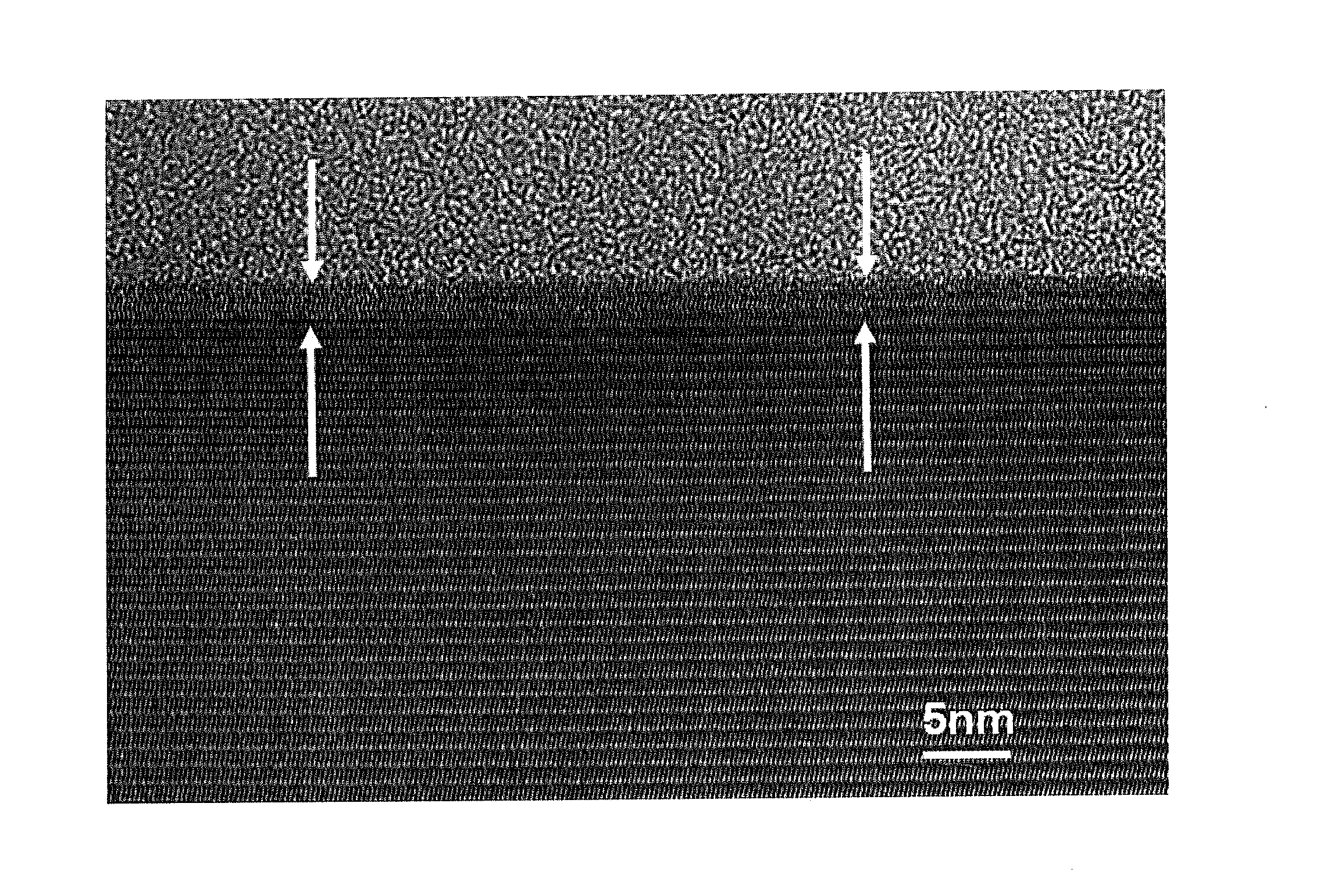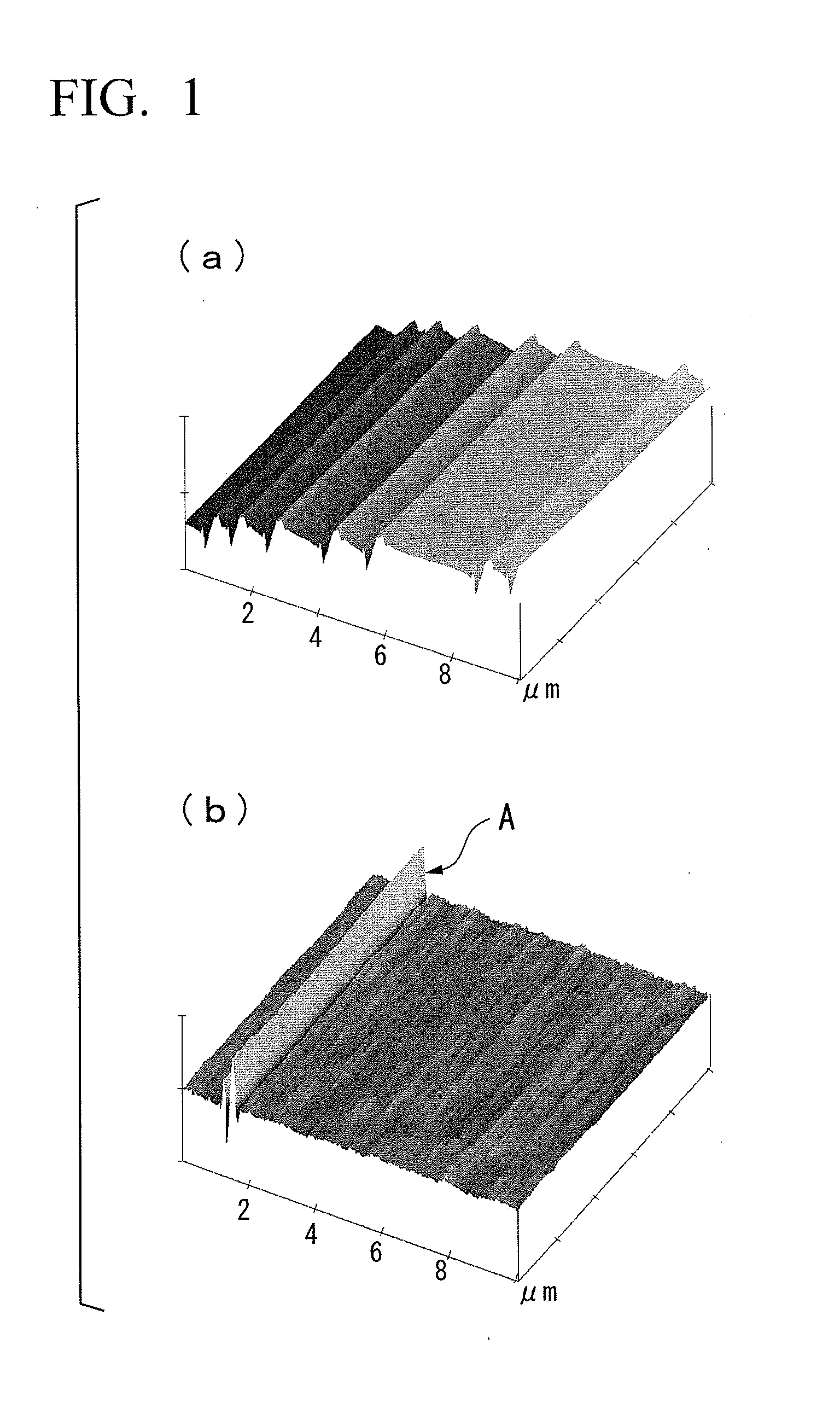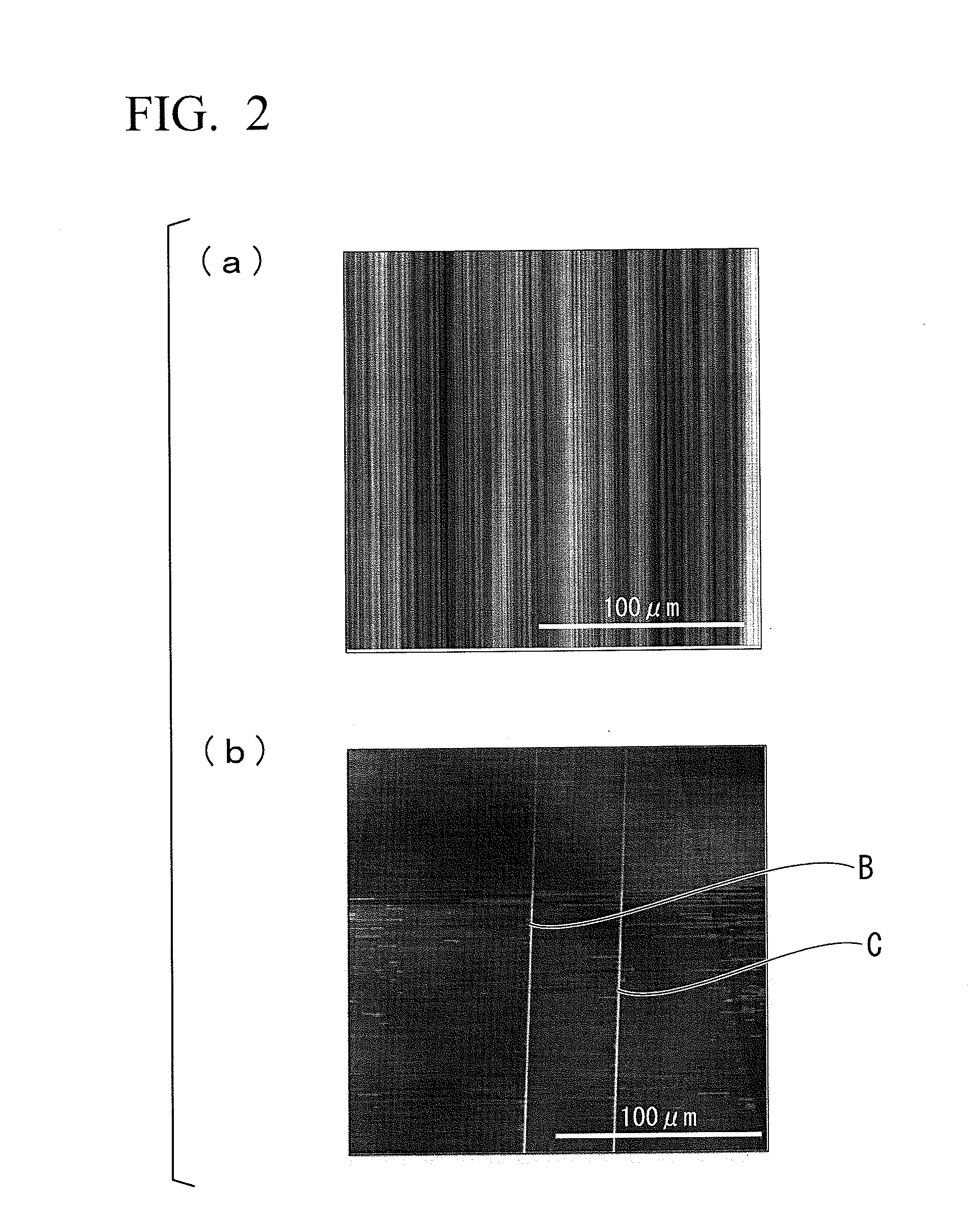Sic epitaxial wafer and method for manufacturing same
a technology of epitaxial wafers and manufacturing methods, applied in the direction of crystal growth process, polycrystalline material growth, chemically reactive gases, etc., can solve the problems of stacking faults, step bunching, performance enhancement approaching its limits, etc., to improve the uniformity of carrier concentration and film thickness, and the effect of satisfactory in-plane uniformity
- Summary
- Abstract
- Description
- Claims
- Application Information
AI Technical Summary
Benefits of technology
Problems solved by technology
Method used
Image
Examples
working examples
[0187]The present invention is described in further detail below by means of working examples, but the present invention is not limited by these working examples.
[0188]The present working examples use SiH4 gas as the silicon-containing gas, C3H8 gas as the carbon-containing gas, N2 gas as the doping gas, and H2 gas as the carrier gas and the etching gas, and SiC epitaxial film is grown on an Si surface and a C surface which are slightly tilted in the axis direction relative to the (0001) surface of the 4H—SiC single crystal by a Hot Wall SiC CVD (VP2400HW) manufactured by Aixtron Corporation which is a multiple-sheet planetary (autorotation) CVD apparatus of the mass production type.
[0189]Si Surface of 4H—SiC Single Crystal Substrate with Off Angle of 4°
working example 1
[0190]An SiC epitaxial layer was grown on the Si surface of a 4H—SiC single crystal substrate tilted at an off angle of 4°.
[0191]In the present working example, convexity machining is not conducted on the 4H—SiC single crystal substrate.
[0192]With respect to the polishing process, the mechanical polishing prior to CMP was conducted at a working pressure of 350 g / cm2, using abrasive grain with a diameter of 5 μm or less. CMP was conducted for 30 minutes under conditions where silica particles with an average particle size of 10-150 nm were used as the polishing particles, sulfuric acid was included as the inorganic acid, and a polishing slurry with a pH of 1.9 at 20° C. was used. By this means, the lattice disorder layer of the surface was 3 nm or less.
[0193]After polishing, the substrate was subjected to RCA cleaning, and subsequently introduced into the growth apparatus. RCA cleaning is a wet cleaning method which is commonly used on Si wafers, and is able to remove organic matter ...
working example 2
[0203]An SiC epitaxial wafer was manufactured under the same manufacturing conditions as Working Example 1, except that the growth process was conducted for 2.5 hours at a growth rate of 4 μm / h.
[0204]The manufactured SiC epitaxial wafer was measured and evaluated by an optical surface inspection device (Candela CS20 manufactured by KLA-Tencor Corporation) and a photoluminescence imaging device (PLI-100 manufactured by Photon Design Corporation), and a wide-range observation type AFM (Nanoscale Hybrid Microscope VN-8000 manufactured by Keyence Corporation).
[0205]Triangular defect density was 0.4 defects / cm2, and stacking fault density was 0.1 faults / cm2. No step bunching was observed.
[0206]Both cases were under 1 defect or fault / cm2, and even with respect to a 4H—SiC single crystal substrate with a 1.2° off angle lower than that of Working Example 1, extremely high quality epitaxial film of low defect density was formed.
[0207]C Surface of 4H—SiC Single Crystal Substrate with Off Angl...
PUM
| Property | Measurement | Unit |
|---|---|---|
| Temperature | aaaaa | aaaaa |
| Temperature | aaaaa | aaaaa |
| Temperature | aaaaa | aaaaa |
Abstract
Description
Claims
Application Information
 Login to View More
Login to View More - R&D
- Intellectual Property
- Life Sciences
- Materials
- Tech Scout
- Unparalleled Data Quality
- Higher Quality Content
- 60% Fewer Hallucinations
Browse by: Latest US Patents, China's latest patents, Technical Efficacy Thesaurus, Application Domain, Technology Topic, Popular Technical Reports.
© 2025 PatSnap. All rights reserved.Legal|Privacy policy|Modern Slavery Act Transparency Statement|Sitemap|About US| Contact US: help@patsnap.com



